For ethnic minority communities in the Central Highlands in general and Kon Tum province in particular, the communal house is considered the "heart" of the entire village.
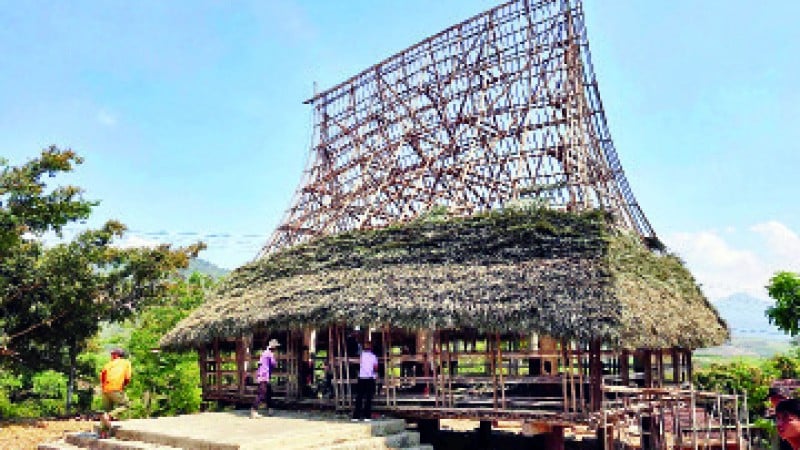 Dak Wâk villagers, Dak Kroong commune, Dak Glei district join hands to repair the communal house.
Dak Wâk villagers, Dak Kroong commune, Dak Glei district join hands to repair the communal house.With an important element in beliefs and life, communal houses are always preserved by ethnic minorities to promote traditional values and create a cultural space with unique characteristics of each ethnic group.
A long time ago, communal houses were built with modern materials such as bricks, stones, and corrugated iron roofs, which made most ethnic minorities feel unfamiliar and uninterested in communal activities at communal houses.
Thanks to investment resources from Project 6 under the National Target Program on Socio -Economic Development of Ethnic Minority and Mountainous Areas for the 2021-2030 Period, many traditional communal houses in Kon Tum Province have been restored, creating excitement in the community.
Join hands to build a new communal house
With its unique architecture, the communal house in Dak Wâk village, Dak Kroong commune is considered the most beautiful communal house, preserving the unique cultural features of the Gie-Trieng people in Dak Glei district. The Gie-Trieng people believe that the communal house is the common house of the villagers because it is often the place for village meetings, activities and solving important community issues.
Over a long period of time since its construction, the roof of the communal house has gradually deteriorated, so the Council of Elders of Dak Wâk village met and decided to repair the communal house right after the harvest season. To repair the communal house, the villagers of Dak Wâk elected and established an Executive Committee of 25 people to share responsibility and guide the work.
There were more than 260 women and 300 men of working age divided into 4 teams to collect paintings, rattan, bamboo and reeds. Mr. A Quoc (a villager) said that the village elder assigned each person a specific task, depending on each person's ability, everyone enthusiastically participated with the desire to contribute a part of their efforts to repair the traditional communal house.
This is an important task for the villagers because the communal house is the "soul" of the whole village, left by previous generations as a unique cultural feature, so we must make every effort to preserve and maintain it.
With the determination and unity of the villagers, more than 5,000 working days were contributed by the people to complete the repair of the communal house after 1 month.
Dak Wâk A Thong, the village elder, happily shared that the completion of the communal house renovation has demonstrated the solidarity and unity in the community and is also the inherent beauty of the Gie-Trieng people. Now, the people are happy that the communal house has become more spacious, beautiful and has a place to organize cultural, sports and festival activities.
These days, the Xo Dang people, a branch of the To Dra in Kon Ron village (Ngọk Réo commune, Đắk Hà district) are also happily participating in community activities at the new communal house. The communal house has just been completed and repaired on the foundation of the old communal house, including 6 pillars, floors, roofs and stairs made from wood, bamboo, rattan and rattan.
To ensure the preservation of the traditional communal house, the To Dra people in the village held a meeting to get opinions from the Council of Village Elders, who are experienced in choosing natural materials, decorating and completing the details and patterns of the communal house. With the support of the local government, the villagers of Kon Ron contributed an additional 41 million VND and nearly 3,000 working days for construction.
Mr. U Nam Hue, Head of Kon Ron Village, said that the repair of the communal house was done by the whole local community. The village elders and prestigious people are always dedicated to instructing and teaching their children and grandchildren how to build a traditional communal house. The younger generation is very excited to directly do and experience things like weaving thatch and roofing, contributing to preserving the cultural beauty of the To Dra people.
Promote cultural values
Through Project 6 under the National Target Program on Socio-Economic Development of Ethnic Minorities and Mountainous Areas for the 2021-2030 period, the Department of Culture, Sports and Tourism of Kon Tum province has implemented many programs to restore, preserve and develop traditional cultural identities; preserve festivals, exploit and develop products for tourism development; support programs to research, restore and preserve traditional musical instruments of ethnic groups; and build folk culture clubs.
According to statistics from the cultural sector, Kon Tum province currently has 503 ethnic minority villages, with 479 communal communal houses and stilt houses; of which, 221 houses use traditional materials for construction such as wood, bamboo, and thatched roofs. When traditional communal houses are restored, people bring other unique cultural values such as weaving, knitting, gongs, and xoang dance.
Because the ethnic minority community here believes that no matter where they go or what they do, the villagers always turn towards their majestic “common home”. This is not only a matter of belief, but also carries unique cultural values such as festivals, traditional crafts, etc.
In addition to restoring communal houses according to the traditions of local ethnic groups, creating attractive destinations for tourists, introducing the unique features of communal houses of each ethnic group, many traditional cultural villages in Kon Tum province have received attention from authorities at all levels, focusing on preserving and promoting traditional cultural heritage associated with developing community tourism, such as: Kon K'tu village (Dak Ro Wa commune, Kon Tum city); Bar Goc village (Sa Son commune, Sa Thay district); Kon Pring village (Dak Long commune, Kon Plong district); Kon Trang Long Loi village (Dak Ha town, Dak Ha district); Dak Rang village (Dak Xu commune, Ngoc Hoi district)...
In these villages, people still maintain gong teams, brocade weaving, wine making and related religious rituals. At the same time, people also started to boldly and gradually get used to welcoming tourists to their villages for sightseeing and experiences.
Village elder Blong Ve, Dak Rang village (Dak Duc commune, Ngoc Hoi district) said that with the investment resources of the Party and the State, the Gie-Trieng people in the village are very excited when the cultural beauty of the community is preserved and promoted. Dak Rang village has been recognized as a Community Tourism Village.
Mr. Josh Herman (tourist from Australia) shared: “The communal house of the people is made of natural materials, which makes me feel very excited because it is environmentally friendly. The unique construction method, especially the thatched roof, has become a very impressive and majestic cultural feature.”
For Mr. Dang Tran Lam (a tourist from Dong Nai), the grandeur and majesty of the communal house at Kon K'tu Community Tourism Village (Kon Tum City) overwhelmed him. The fact that the locals only used rope, bamboo, and wood carving techniques to build a communal house tens of meters high is extraordinary.
Deputy Director of the Department of Culture, Sports and Tourism of Kon Tum province Phan Van Hoang said that to ensure the preservation and promotion of traditional communal houses, many localities in the province have proactively built raw material areas; at the same time, they have promoted and encouraged people to exploit enough bamboo, rattan and thatch to avoid the shortage of traditional materials in the future.
In the coming time, the Department of Culture, Sports and Tourism of Kon Tum province will continue to strengthen the preservation and restoration of traditional communal houses in ethnic minority areas. From there, it will create conditions for cultural heritages to have space to develop, leading to the preservation of many other cultural values such as traditional crafts, gongs, xoang, and festivals. At the same time, it will build, perfect, and improve the effectiveness of implementing policies on socio-economic development in ethnic and mountainous areas in a comprehensive and sustainable manner, associated with the propaganda, promotion, and development of local tourism.
Source: https://baodaknong.vn/kon-tum-bao-ton-va-phat-trien-nha-rong-240409.html



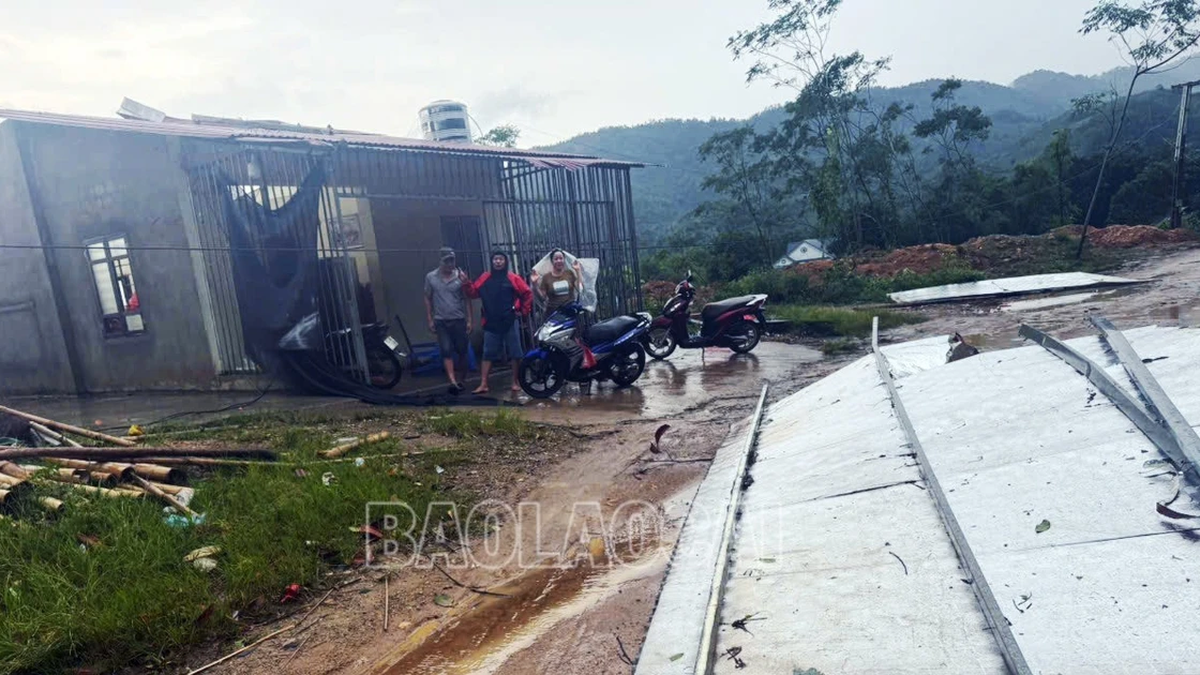
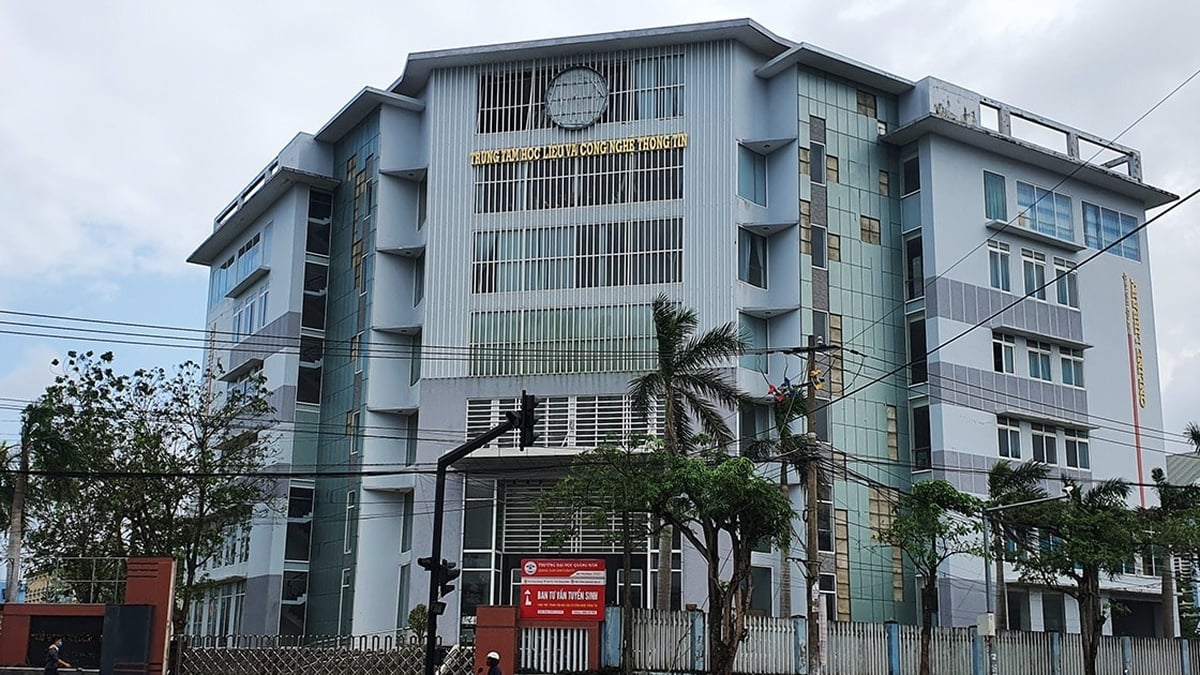
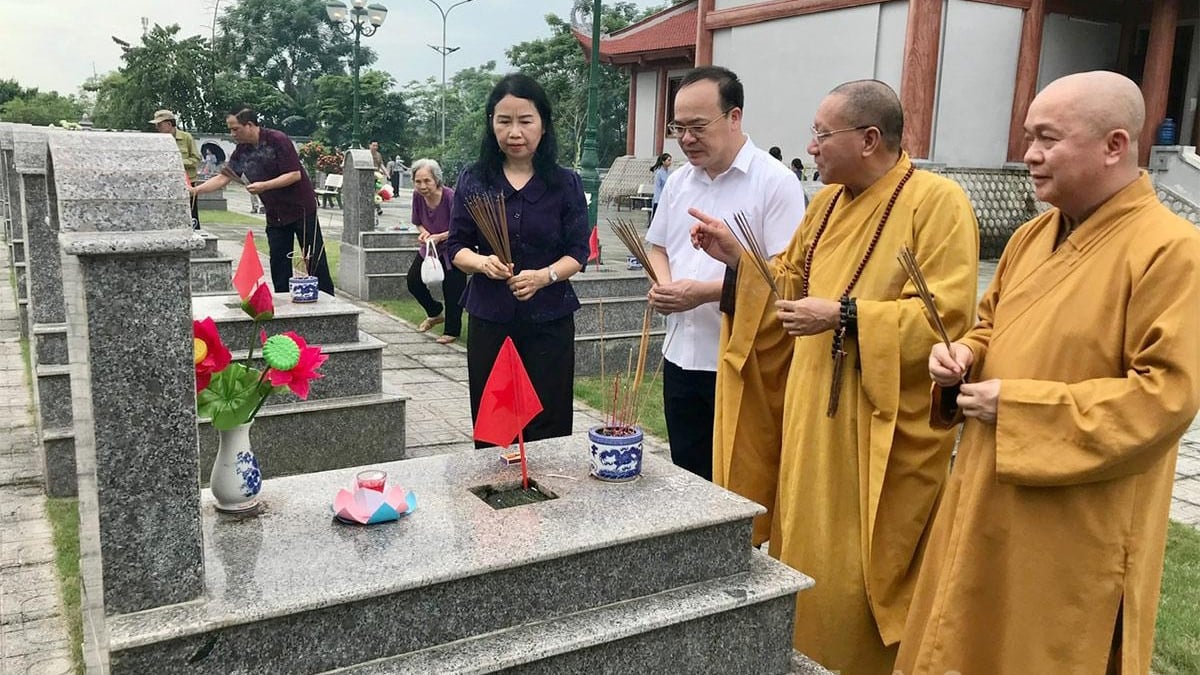

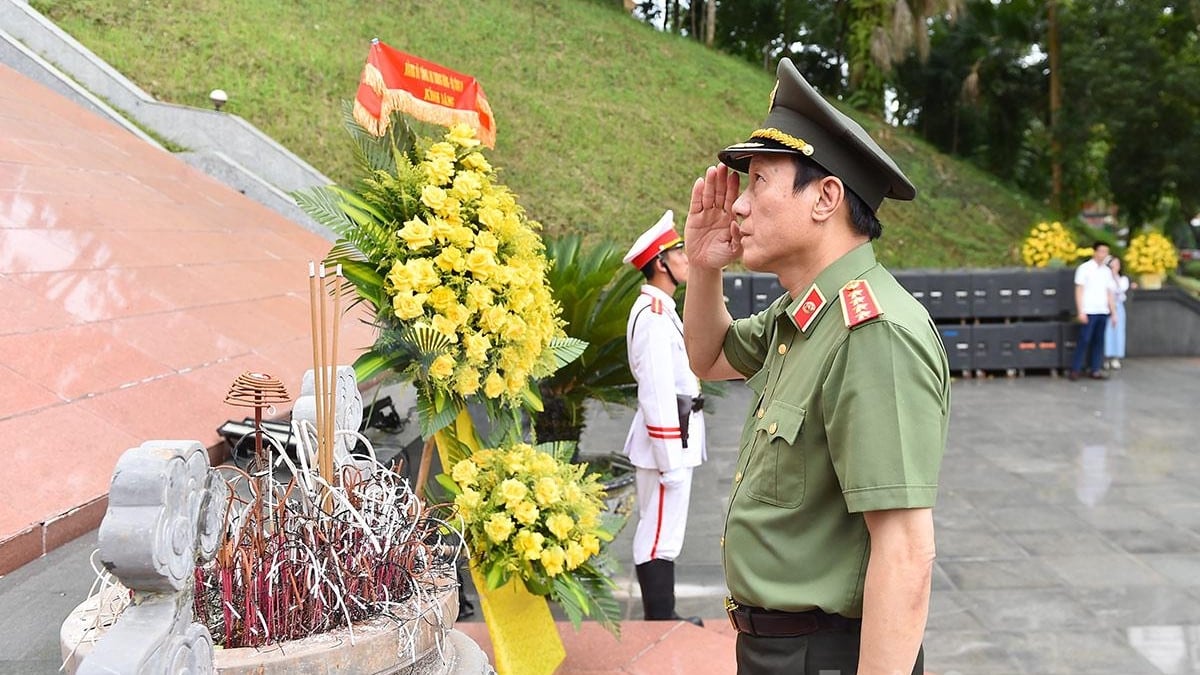
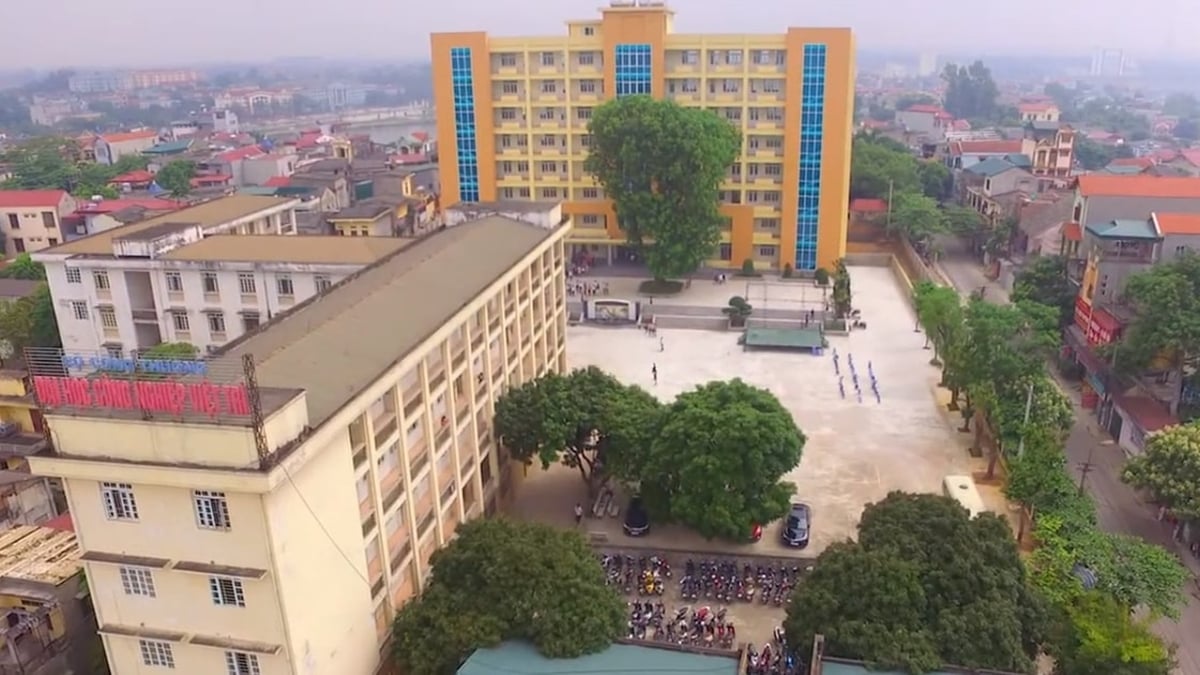

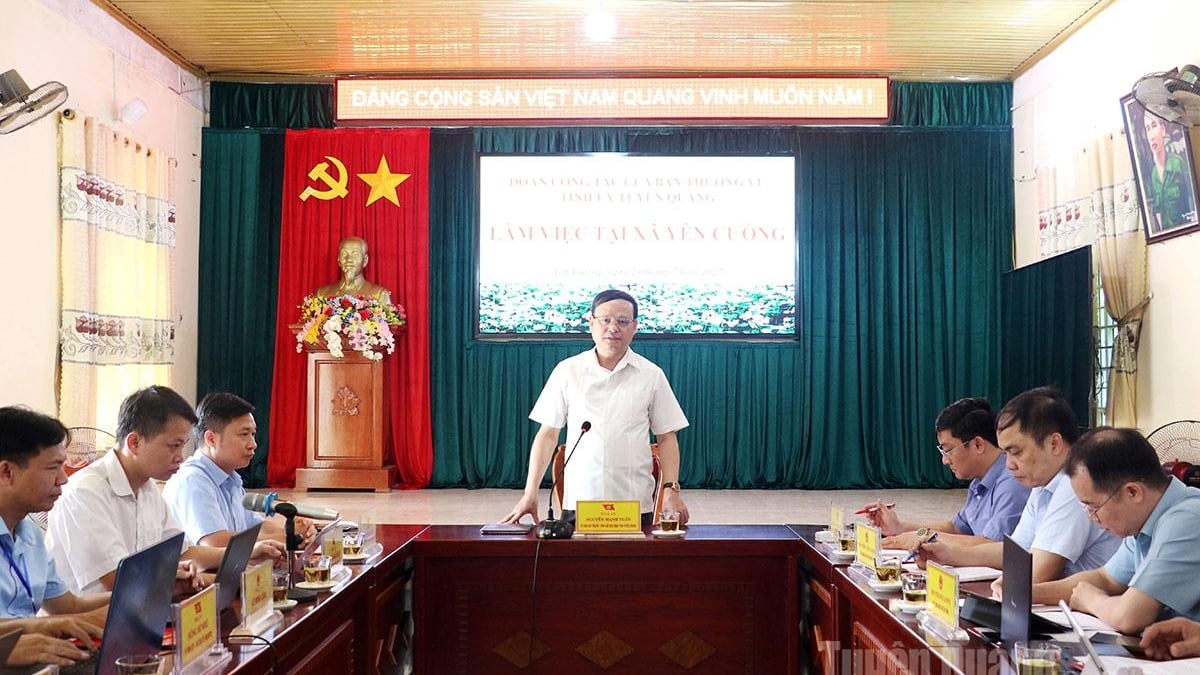














![[Photo] National Assembly Chairman Tran Thanh Man visits Vietnamese Heroic Mother Ta Thi Tran](https://vphoto.vietnam.vn/thumb/1200x675/vietnam/resource/IMAGE/2025/7/20/765c0bd057dd44ad83ab89fe0255b783)







































































Comment (0)